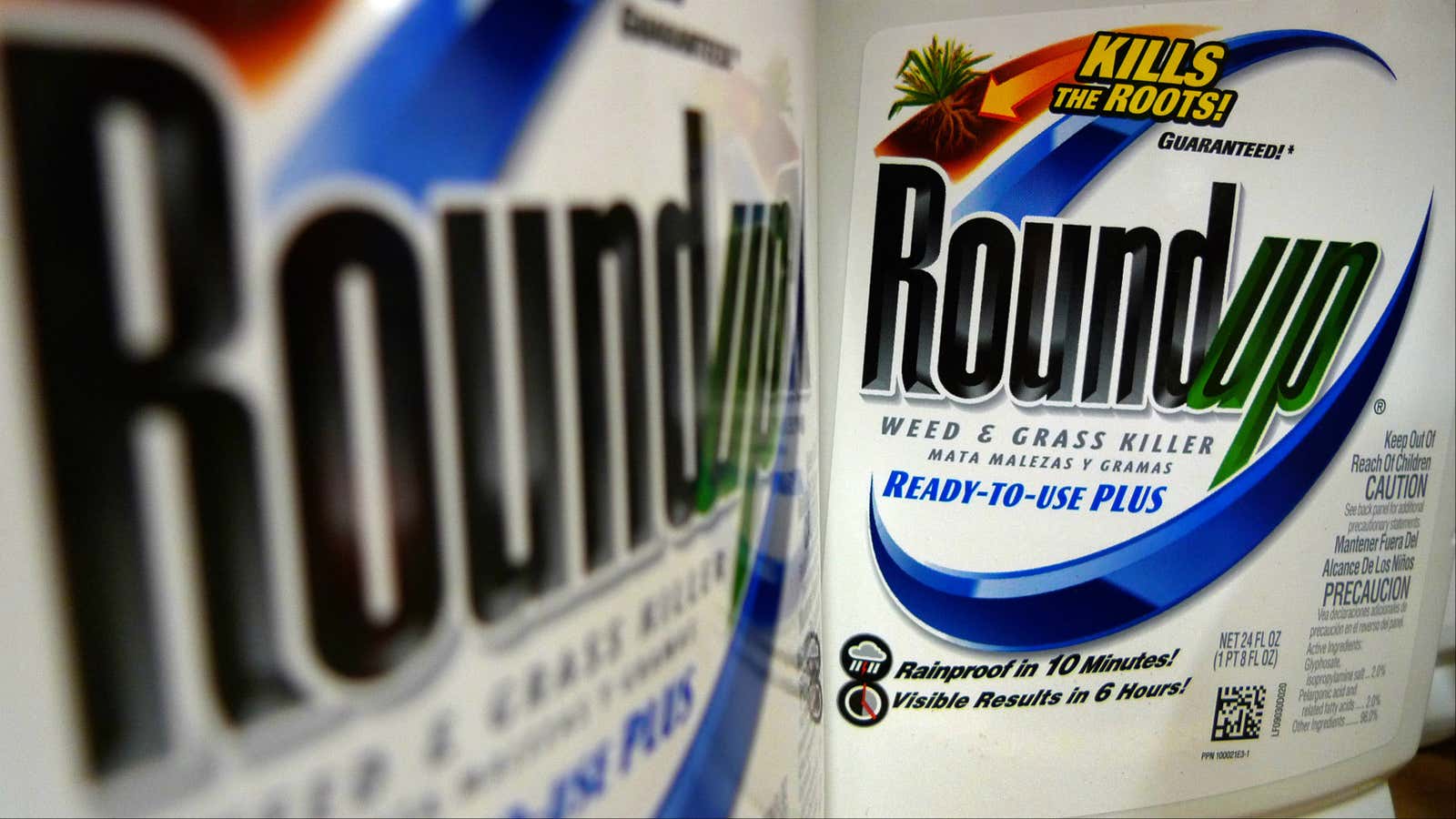There’s a pretty good chance people in the US are eating low levels of a commonly used and controversial herbicide, though whether that poses a danger to human health remains unclear.
The US Food and Drug Administration (FDA) has reportedly found traces of glyphosate in a number of common foods, according to agency emails obtained by The Guardian.
“I have brought wheat crackers, granola cereal, and corn meal from home and there’s a fair amount in all of them,” reported an FDA field-office researcher named Richard Thompson in an email to the agency’s office of regulatory affairs. Thompson, based in a government laboratory in Arkansas, noted in the email that the only pesticide-free food he had on hand turned out to be broccoli. Another FDA chemist doing similar testing found grain corn to contain traces of glyphosate at 6.5 parts per million (ppm). The legal limit is 5 ppm.
It is unclear whether the finding should be a cause for alarm. Though food-transparency advocacy groups such as US Right to Know have trumpeted the potential dangers of the chemical, and have railed against its maker, Monsanto, for marketing the stuff, the science around the potential effects of glyphosate exposure isn’t settled.
The chemical was introduced to the market in 1974 by Monsanto as part of a weed-killing product called Roundup. American farmers began using the weedkiller on their crops, so much so that by 2007 it was the most widely used herbicide in the country. Because the science around the chemical has often conflicted, it’s become difficult for farmers and food buyers to slice through the noise.
In 2014, the Journal of Environmental Research and Public Health published a study linking a heightened risk for non-Hodgkin lymphoma to agricultural workers’ long-term exposure to glyphosate while working in the fields with crops. In 2015, the World Health Organization added glyphosate to its sprawling list of things “probably carcinogenic to humans” in food. That same year, though, the European Food Safety Authority noted in a toxicology review that the chemical was “unlikely to pose a carcinogenic hazard to humans” in food.
Meanwhile, even as it faces hundreds of lawsuits in the US over glyphosate’s association with non-Hodgkin lymphoma, Monsanto maintains use of the chemical is safe, saying that “no other pesticide has been more extensively tested.”
Current US government analyses of glyphosate do not account for instances in which people are eating trace amounts . The FDA is expected to release an updated report on the herbicide by early 2019.
